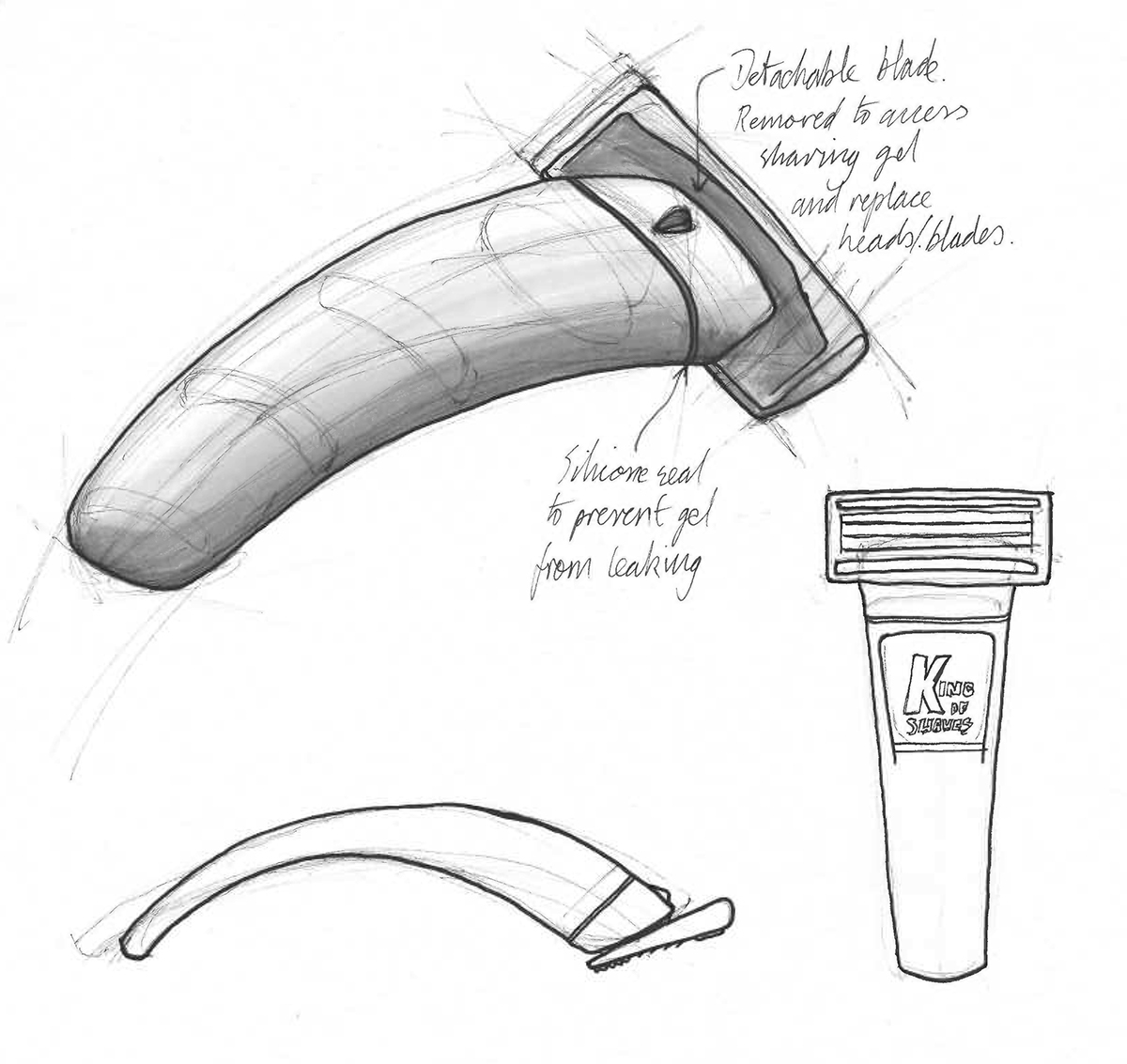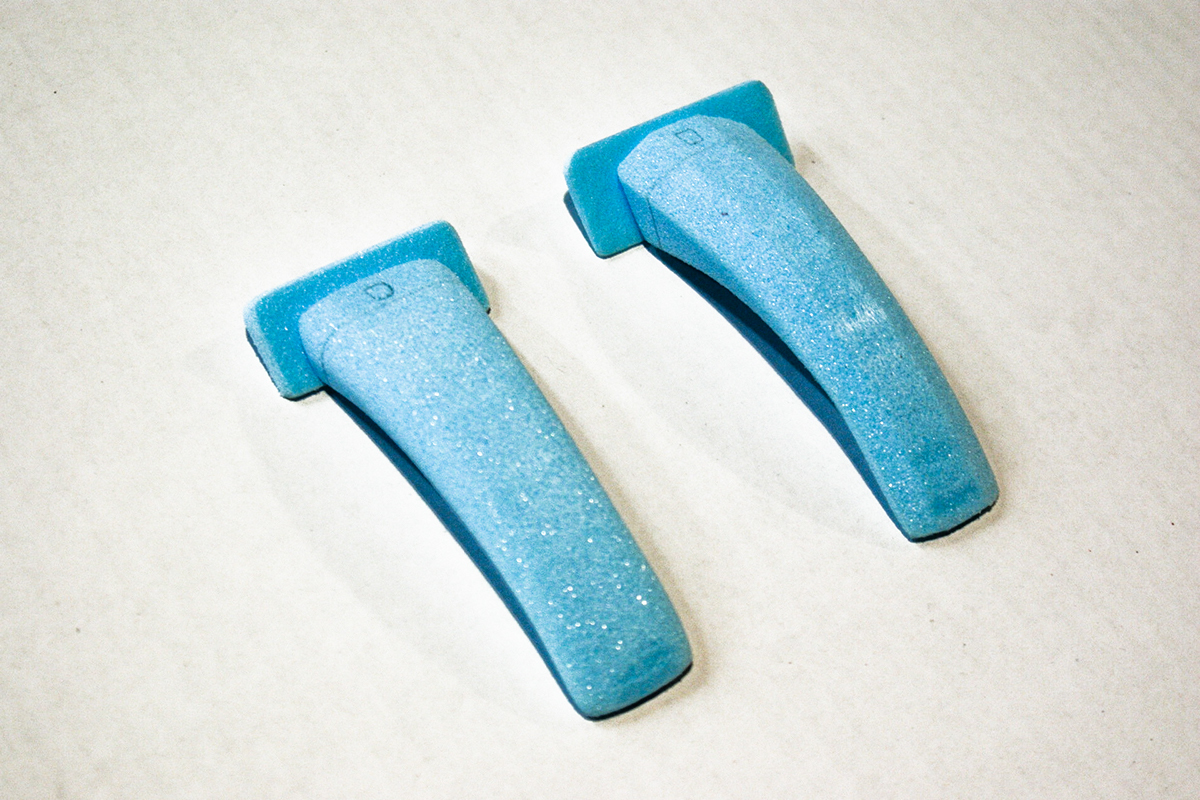
A contextual render.
The brief for this second year university project was to select and design for a specific user group. I chose the young male business professional who spends a lot of time travelling to engage in business meetings. After defining the demographic I decided on a style and visual language that would be conveyed in my design.
The razor is designed for the young professional who takes pride in their grooming products. The sleek shape and subtle contours are used to convey the professionalism and streamlined efficiency of the intended user.
I followed a series of design processes; research, analyse, sketch, prototype, test, refine and final prototype. The final prototype is 3D printed in SLS nylon and finished using paint. The head is fully functional with real blade inserts.

A selection of initital sketches.

Idea development through sketching.
Listening to the User
User feedback during testing indicated that the initial smooth finish was not masculine enough. After development using blue foam, defined edges and stronger angles were implemented into the design to create a tailored, masculine profile.

Form development through blue foam modelling.
Digital to Physical Analysis
3D printing, when implemented correctly, can help designers make quick iterations to their design that improve upon the form and aesthetics. Designs that exist in the 3D virtual world can appear very different once extrapolated into the physical world. Based on sensory feedback from the 3D printed models, the design of the handle was refined to create a more comfortable fit during use.

Further form development using rapid prototyping.


The final prototype is used to represent form, function and aesthetics. The head can be ejected and the blade holder pivots.
This model was 3D printed in SLS nylon. The model was then sanded, sprayed in a primer and then colour was applied using spray paint.
This model was 3D printed in SLS nylon. The model was then sanded, sprayed in a primer and then colour was applied using spray paint.

